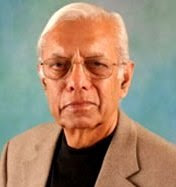WORLD NO TOBACCO DAY
CRUSADE AGAINST SMOKERS
CRUSADE AGAINST SMOKERS
 www.euronews.com - World No Tobacco Day (WNTD) is observed around the world every year on May 31. It aims to encourage a 24-hour period of abstinence from all forms of tobacco consumption across the globe. Another intended purpose is to draw global attention to the widespread prevalence of tobacco use and to the negative health effects of using tobacco products, which currently lead to an estimated 5.4 million deaths worldwide annually.
www.euronews.com - World No Tobacco Day (WNTD) is observed around the world every year on May 31. It aims to encourage a 24-hour period of abstinence from all forms of tobacco consumption across the globe. Another intended purpose is to draw global attention to the widespread prevalence of tobacco use and to the negative health effects of using tobacco products, which currently lead to an estimated 5.4 million deaths worldwide annually.The member states of the World Health Organisation (WHO) created World No Tobacco Day in 1987. In the past twenty years, the day has been met with both enthusiasm and resistance across the globe from governments, public health organizations, smokers, growers, and the tobacco industry. Each year May 31 is observed as World No Tobacco Day (WNTD), but do we actually understand its importance? Many smokers pledge to quit smoking on this day and forget it just the next day?
 According to the World Health Organisation (WHO) , the tobacco epidemic is one of the biggest public health threats the world has ever faced. It kills nearly six million people a year, of whom more than five million are from direct tobacco use, while more than 600,000 of tobacco’s victims are non-smokers exposed to second-hand smoke. Approximately one person dies every six seconds due to tobacco and this accounts for one in 10 adult deaths. Up to half of current users will eventually die of a tobacco-related disease.
According to the World Health Organisation (WHO) , the tobacco epidemic is one of the biggest public health threats the world has ever faced. It kills nearly six million people a year, of whom more than five million are from direct tobacco use, while more than 600,000 of tobacco’s victims are non-smokers exposed to second-hand smoke. Approximately one person dies every six seconds due to tobacco and this accounts for one in 10 adult deaths. Up to half of current users will eventually die of a tobacco-related disease. Nearly 80% of the more than one billion smokers worldwide live in low- and middle-income countries, where the burden of tobacco-related illness and death is heaviest. Tobacco users who die prematurely deprive their families of income, raise the cost of health care and hinder economic development.
WHAT DO THE VEDIC TEACHINGS TELL US?
 My father told me when he was young, nobody had any idea that cigarettes were bad. It was fashionable to smoke cigarettes. One movie star always had a cigarette hanging out of his mouth. The way he did it the whole of America was trying to imitate. He was such a sex symbol and such a handsome heroic person. His style became the fashion. ... but he died of cancer of the lips. So doctors began coming out and saying, ‘Cigarettes are going to kill you. Stop Smoking!’ When that message came out cigarette smoking became more popular among the young people. Because they are trying to prove to themselves, “I am daring. I am fearless. I don’t care if I am risking my life. I am going to do it to be cool. Yes I know it will kill me.” It’s so foolish. It’s just the example of mentality of material existence. We are not willing to listen to good advice.
My father told me when he was young, nobody had any idea that cigarettes were bad. It was fashionable to smoke cigarettes. One movie star always had a cigarette hanging out of his mouth. The way he did it the whole of America was trying to imitate. He was such a sex symbol and such a handsome heroic person. His style became the fashion. ... but he died of cancer of the lips. So doctors began coming out and saying, ‘Cigarettes are going to kill you. Stop Smoking!’ When that message came out cigarette smoking became more popular among the young people. Because they are trying to prove to themselves, “I am daring. I am fearless. I don’t care if I am risking my life. I am going to do it to be cool. Yes I know it will kill me.” It’s so foolish. It’s just the example of mentality of material existence. We are not willing to listen to good advice. Śrīla Radhanath Swami Mahārāja :
“Listen To Good Advice”
http://www.radhanath-swami.net/
http://radhanathswami.info/archives
http://radhanathswami.info/knowledge/listen-good-advice-radhanath-swami#more-814
Published by dasavatara das - "Vedic Views on World News"
http://www.vedicviews-worldnews.blogspot.com.ar/
http://www.vedicviews-worldnews.blogspot.com.ar/






























